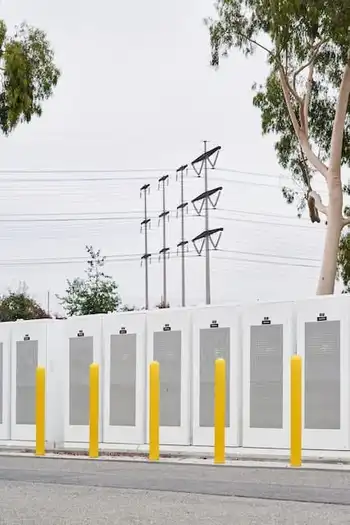Solar farm to bring power to Spartanburg neighborhoods
By Herald-Journal, Spartanburg, S.C.
NFPA 70e Training - Arc Flash
Our customized live online or in‑person group training can be delivered to your staff at your location.

- Live Online
- 6 hours Instructor-led
- Group Training Available
The $7 million project will turn a former 35-acre Superfund site with no alternative development potential into a solar farm that can generate enough electricity to power 500 homes in Spartanburg. Around 12,000 solar panels will be installed at the 3.5 megawatt site.
The emissions offset of the project will be equal to removing about 4,000 metric tons of carbon dioxide from the environment, or taking 800 vehicles off the road.
It will be the first-ever solar power facility placed on a South Carolina landfill.
State Rep. Harold Mitchell said the solar project will reverse the negative environmental impact that the landfill once had on the Arkwright and Forest Park neighborhoods. In the late 1990s, Mitchell linked health concerns to the pollution in both neighborhoods and responded by forming the nonprofit organization ReGenesis.
"The solar farm is a great option for the property, which is too large for a single public entity, like the city or county, to maintain alone," Mitchell said. "Rather than having the site stay fenced in for another 20 or 25 years for monitoring, we saw this renewable energy idea."
The landfill, which once operated just 250 feet from a residential area, is now capped and undevelopable for any other kind of infrastructure.
The city of Spartanburg spent about $5.6 million to cap the former landfill, a process that was completed in 2012.
Mitchell said the solar power facility will produce approximately 5.5 million kWh of clean, renewable energy in just its first year of operation.
The solar project is a culmination of years of collaboration between ReGenesis, the U.S. Environmental Protection Agency Region 4, Duke Energy, groSolar, the city of Spartanburg, the S.C. Department of Health and Environmental Control, MDB Inc. and Solvay USA Inc. ReGenesis, groSolar and Duke Energy formally announced a Commitment to Action for the solar power facility during the 2016 Clinton Global Initiative America meeting in June.
The facility will be maintained and monitored by groSolar, a large solar engineering, procurement and construction firm. GroSolar anticipates the creation of roughly 50 construction jobs over the first year as the solar power facility is built.
Jamie Resor, CEO of groSolar, said the company is proud to be part of the groundbreaking project.
"As a company that prides itself on renewable, environmentally friendly ways to produce energy, we are proud that this will be the first solar power facility on a South Carolina landfill," Resor said.
Willa Reeder, president of the Forest Park Neighborhood Association, said she thinks the solar project will continue to transform the Forest Park and Arkwright neighborhoods, which have been plagued by environmental and health problems.
"We're excited that it lines up with the initiative that we have as far as bringing the standard up for economic impact," she said. "We are a model project for so many things that can happen for neighborhoods that have experienced environmental injustice and the positive outcomes that can take place if we identify our problems and address it with agencies that can help us."
Reeder said by having solar energy available in close proximity, residents will see a decrease in utility bills.
"It will lower our cost of energy usage for our entire neighborhood, and not just the part with renovated and new homes," she said.
State legislation on solar energy that was sponsored by Mitchell and passed in 2014 has given a boost to the south side solar project. Additional state legislation sponsored by Mitchell and passed in February provides renewable energy tax credits for solar energy properties and geothermal machinery and equipment.
Mitchell said the bill allows the Arkwright solar project to use $2.5 million in state tax credits. Another $2 million is coming from federal tax credits, he said.
In order to absorb the credits, the solar power facility has to be fully functional by the end of 2017, he said.
ReGenesis and project partners are seeking an additional $2.5 million in contributions to assist with development and construction costs. "The commitment to action was to help us expedite getting the rest of these funds, whether in grant form or through foundations, so that we can stay on schedule," Mitchell said.











